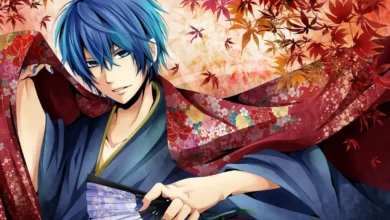Exploring the Global Appeal of Japanese Pop Culture
Japanese pop culture has exploded onto the global stage, captivating audiences worldwide. From anime and manga to video games and fashion, its influence is undeniable. But what makes it so appealing? This article delves into the various facets of Japanese pop culture and explores the reasons behind its widespread popularity.
Understanding the Allure: What Makes Japanese Pop Culture So Captivating?
The appeal of Japanese pop culture isn’t just about flashy visuals or catchy tunes. It’s a complex blend of creativity, innovation, and cultural values that resonates with people from diverse backgrounds. Let’s unpack some key elements.

A Unique Blend of Tradition and Modernity
One of the most striking aspects of Japanese pop culture is its ability to seamlessly blend traditional elements with modern aesthetics. You might see a futuristic anime character wielding a katana, or a J-pop song incorporating traditional Japanese instruments. This fusion creates a unique and captivating experience.
- Anime and Manga: Often feature historical settings or mythological creatures, re-imagined with modern animation techniques and storytelling.
- Fashion: Incorporates traditional motifs and fabrics into contemporary designs.
- Music: J-Pop often draws inspiration from traditional Japanese music forms and melodies.
Rich Storytelling and Complex Characters
Japanese pop culture often boasts sophisticated narratives and well-developed characters that go beyond simple good versus evil. Many stories explore complex themes such as identity, morality, and the human condition, inviting viewers and readers to connect with the characters on a deeper level.
See also How Brazilian Culture Shapes Global Trends in Music and Carnival Celebrations
How Brazilian Culture Shapes Global Trends in Music and Carnival CelebrationsExample: Consider the anime series “Neon Genesis Evangelion,” which delves into themes of depression, trauma, and the search for meaning in a dystopian world.
Visual Appeal and Artistic Excellence
The visual artistry inherent in much of Japanese pop culture is undeniable. Whether it’s the vibrant colors and dynamic action of anime, the intricate details of manga panels, or the cutting-edge graphics of video games, the visual element is a major draw.
- Attention to Detail: Artists and creators pay meticulous attention to detail, creating visually stunning and immersive experiences.
- Unique Art Styles: Distinct artistic styles, like the iconic “moe” style in anime, contribute to the unique visual identity.
- Technological Innovation: Japan has consistently pushed the boundaries of visual technology, from anime animation techniques to video game graphics.
A Culture of Innovation and Creativity
Japan has a long-standing reputation for innovation and creativity, which is reflected in its pop culture. From groundbreaking animation techniques to innovative game design, Japanese creators are constantly pushing the boundaries of what’s possible.
Key Examples:
See also How Caribbean Culture Influences Global Music and Festivals
How Caribbean Culture Influences Global Music and Festivals- The development of the animation medium itself, with pioneers like Osamu Tezuka (“Astro Boy”).
- Groundbreaking video game genres like the role-playing game (RPG) and innovative consoles from companies like Nintendo and Sony.
- The constant evolution of music styles within J-Pop, embracing new technologies and trends.
Exploring Key Genres and Forms of Japanese Pop Culture
Japanese pop culture encompasses a wide range of genres and forms. Here’s a closer look at some of the most popular and influential ones.

Anime: Animated Storytelling on a Global Scale
Anime, or Japanese animation, is arguably the most globally recognized form of Japanese pop culture. Its diverse genres, captivating stories, and distinctive visual style have captivated audiences worldwide.
Key Characteristics of Anime:
- Diverse Genres: From action-packed shonen anime like “Dragon Ball Z” to heartwarming slice-of-life anime like “Kiki’s Delivery Service,” there’s an anime for everyone.
- Distinct Visual Style: Characterized by large eyes, expressive features, and dynamic animation.
- Strong Storytelling: Anime often explores complex themes and narratives, offering engaging and thought-provoking experiences.
Popular Anime Genres:
- Shonen: Aimed at young boys, often featuring action, adventure, and themes of friendship and perseverance (e.g., “Naruto,” “One Piece”).
- Shojo: Aimed at young girls, often focusing on romance, relationships, and personal growth (e.g., “Sailor Moon,” “Cardcaptor Sakura”).
- Seinen: Aimed at young men, often exploring more mature themes and complex narratives (e.g., “Berserk,” “Vinland Saga”).
- Josei: Aimed at young women, often focusing on realistic depictions of adult relationships and experiences (e.g., “Chihayafuru,” “Princess Jellyfish”).
Manga: The Art of Japanese Comics
Manga, or Japanese comics, is the print counterpart to anime. Often serving as the source material for anime adaptations, manga offers a diverse range of stories and artistic styles.
Key Characteristics of Manga:
- Black and White Art: Typically printed in black and white, with occasional color pages.
- Right-to-Left Reading: Manga is traditionally read from right to left.
- Panel Layout and Storytelling: Manga artists use panel layout and visual cues to create a dynamic and engaging reading experience.
Popular Manga Genres:
Similar to anime, manga covers a wide range of genres, including:
- Shonen, Shojo, Seinen, Josei: As described above.
- Isekai: A subgenre where characters are transported to another world (e.g., “Sword Art Online,” “That Time I Got Reincarnated as a Slime”).
- Harem: A genre where a protagonist is surrounded by multiple love interests (often of the opposite sex).
Video Games: Interactive Entertainment from Japan
Japanese video games have had a profound impact on the global gaming industry. From iconic franchises like “Super Mario” and “The Legend of Zelda” to innovative game design and unique storytelling, Japanese games have shaped the landscape of interactive entertainment.
Key Characteristics of Japanese Video Games:
- Unique Game Design: Japanese game developers often prioritize innovative gameplay mechanics and creative level design.
- Strong Narrative Focus: Many Japanese games feature rich stories and compelling characters.
- Distinct Art Styles: From the cute and colorful art of “Animal Crossing” to the realistic visuals of “Final Fantasy,” Japanese games boast diverse and distinctive art styles.
Popular Japanese Video Game Genres:
- Role-Playing Games (RPGs): A genre that originated in Japan, featuring character customization, turn-based combat, and epic storylines (e.g., “Final Fantasy,” “Dragon Quest,” “Persona”).
- Fighting Games: Known for their fast-paced action and competitive gameplay (e.g., “Street Fighter,” “Tekken,” “Super Smash Bros.”).
- Action-Adventure Games: Blending action, exploration, and puzzle-solving elements (e.g., “The Legend of Zelda,” “Metroid”).
J-Pop: The Sound of Japan
J-Pop, or Japanese pop music, is a vibrant and diverse genre that encompasses a wide range of styles, from bubblegum pop to rock and electronic music. Its catchy melodies, energetic performances, and visual aesthetics have garnered a global following.
Key Characteristics of J-Pop:
- Catchy Melodies: J-Pop songs are often characterized by their memorable and infectious melodies.
- Energetic Performances: J-Pop artists are known for their dynamic stage presence and elaborate choreography.
- Visual Aesthetics: J-Pop music videos and album artwork often feature vibrant colors, stylish costumes, and meticulously crafted sets.
Popular J-Pop Groups and Artists:
- AKB48: A massive idol group with numerous members and a devoted fanbase.
- Perfume: A technopop trio known for their futuristic sound and synchronized choreography.
- Arashi: A popular boy band with a long and successful career.
- BABYMETAL: A unique blend of J-Pop and heavy metal.
Japanese Fashion: A World of Style and Self-Expression
Japanese fashion is renowned for its creativity, innovation, and diversity. From the avant-garde styles of Harajuku to the sophisticated designs of Japanese designers, Japanese fashion offers a unique platform for self-expression.
Key Fashion Subcultures:
- Harajuku Fashion: A vibrant and eclectic mix of styles, including Lolita, Decora, and Visual Kei.
- Lolita Fashion: Inspired by Victorian and Rococo era clothing, characterized by elaborate dresses, frills, and lace.
- Cosplay: Dressing up as characters from anime, manga, video games, and other forms of pop culture.
- Streetwear: Blending elements of hip-hop, punk, and skate culture.
The Globalization of Japanese Pop Culture: How Did It Happen?
The global spread of Japanese pop culture is a complex phenomenon driven by a combination of factors. Let’s explore some key contributors:
Technological Advancements and the Internet
The advent of the internet and digital technologies played a crucial role in the globalization of Japanese pop culture. Online streaming platforms, social media, and fan communities have made it easier than ever for people around the world to access and share Japanese content.
- Streaming Platforms: Platforms like Crunchyroll and Netflix have made anime and manga readily available to global audiences.
- Social Media: Social media platforms have facilitated the spread of J-Pop, Japanese fashion trends, and other aspects of Japanese pop culture.
- Fan Communities: Online fan communities have fostered a sense of belonging and provided a platform for fans to connect, share their passion, and translate content.
Strategic Cultural Exports
The Japanese government and various organizations have actively promoted Japanese culture abroad through cultural exchange programs, film festivals, and other initiatives. This strategic approach has helped to raise awareness and increase the popularity of Japanese pop culture around the world.
The Power of Fan Subbing and Scanlation
Before the widespread availability of official translations and subtitles, dedicated fans played a crucial role in translating and distributing anime and manga. This “fan subbing” and “scanlation” effort helped to build a global fanbase and create demand for Japanese content.
Quality Content and Universal Themes
Ultimately, the enduring appeal of Japanese pop culture lies in the quality of its content and its ability to resonate with audiences from diverse backgrounds. The universal themes explored in many anime, manga, and video games – such as love, loss, friendship, and the search for identity – transcend cultural boundaries.
The Impact of Japanese Pop Culture on the World
Japanese pop culture has had a significant impact on global culture, influencing fashion, art, music, and even language.
Influence on Global Fashion
Japanese street fashion has inspired designers and fashion enthusiasts around the world, leading to the adoption of Japanese-inspired styles and trends.
Impact on Art and Design
The unique aesthetics of anime and manga have influenced artists and designers in various fields, from illustration and graphic design to animation and filmmaking.
Global Music Scene
J-Pop has gained a global following, influencing other genres and inspiring artists around the world.
Cross-Cultural Understanding
Japanese pop culture can serve as a bridge between cultures, fostering understanding and appreciation for Japanese customs, values, and traditions.
Conclusion: The Enduring Legacy of Japanese Pop Culture
Japanese pop culture has become a global phenomenon, captivating audiences with its creativity, innovation, and unique blend of tradition and modernity. From anime and manga to video games and fashion, its influence is undeniable, and its legacy is sure to endure for generations to come. By continuing to push boundaries and explore universal themes, Japanese pop culture will undoubtedly continue to shape the global cultural landscape.




